All-in-one foam heel dressing
Mepilex Border Heel
Five-layer foam dressing for pressure ulcer prevention and management of heel wounds
Mepilex® Border Heel features proprietary Deep Defense® technology, providing an optimal balance of strength and flexibility. Each of the unique five layers serves a specific purpose in pressure ulcer prevention adding to the dressing's strength, durability and absorbency.
Only Mepilex Border dressings have over 80 evidence pieces to support their effectiveness in preventing pressure ulcers.
When used for management of wounds, Mepilex Border Heel effectively absorbs and retains exudate
- Mepilex Border dressings proven to prevent pressure ulcers – by up to 88% – when used with other standard prevention protocols
- Proprietary Deep Defense Technology™ addresses the key factors responsible for pressure ulcers, protecting against the extrinsic forces of pressure, shear and friction and managing microclimate
- Safetac technology reduces the risk of maceration
and minimizes pain during dressing changes - Excellent fluid-handling capacity and retention
Further product information
When to use Mepilex Border Heel
Pressure ulcer prevention
Prophylactic dressings used as part of a pressure ulcer prevention protocol have been shown to offer significant benefits and are supported by international guidelines.
When looking at the risk factors for pressure ulcers, both intrinsic and extrinsic factors must be considered. General health, nutritional status, skin moisture, age and history of previous pressure ulcers are some of the key intrinsic components that affect the risk for a patient developing pressure ulcers. Extrinsic factors include pressure, friction, shear, and microclimate.
*Note: the use of dressings as part of a prophylactic therapy does not preclude the need to continue to develop and follow a comprehensive pressure ulcer prevention protocol.
Wound Management
Use Mepilex Border Dressings for medium-to-high exuding wounds, including pressure ulcers, diabetic foot ulcers, heel ulcers, traumatic wounds and other secondary healing wounds. The dressing maintains a moist wound environment, which supports debridement, so you might see an initial increase in the wound size. This is normal and to be expected.
How to use Mepilex Border Heel
Watch how to easily apply Mepilex Border Heel to help you achieve the best result for your patient.
Step-by-step instructions - initial application
How Mepilex Border helps in pressure ulcer prevention
Watch Prof. Gefen explain the modern science on aetiology of pressure ulcers
Downloads
Product details
| Code | Size cm | Pcs/box | Pcs/case |
| 282790 | 8.7" x 9.1" (22 x 23 cm) | 10 | 30 |
Related products
'References'
 Mepilex Border Heel is the PROVEN 5-layer foam pressure ulcer prevention dressing(2)
Mepilex Border Heel is the PROVEN 5-layer foam pressure ulcer prevention dressing(2)





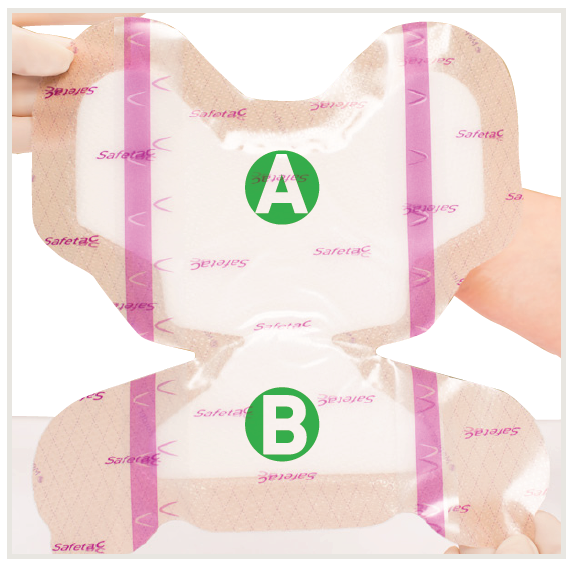
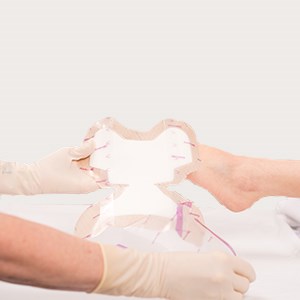 After the skin/wound is prepared, dry the area thoroughly. Then remove the central backing and slide the dressing under the heel to the desired location.
After the skin/wound is prepared, dry the area thoroughly. Then remove the central backing and slide the dressing under the heel to the desired location.
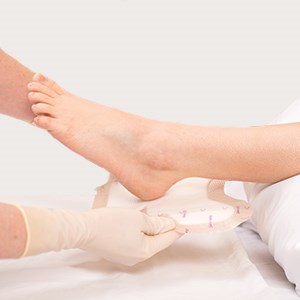 Apply the adherent part of the dressing marked ‘A’ (see illustration at left) to the posterior heel/ Achilles tendon areas, positioning the narrowest part of the dressing at the base of the heel. Do not stretch.
Apply the adherent part of the dressing marked ‘A’ (see illustration at left) to the posterior heel/ Achilles tendon areas, positioning the narrowest part of the dressing at the base of the heel. Do not stretch.
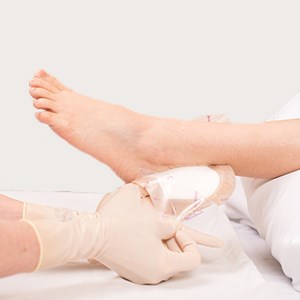 Remove the backing from one of the area ‘A’ flaps (ankle flaps). Apply and smooth. Repeat with the other side. Do not stretch.
Remove the backing from one of the area ‘A’ flaps (ankle flaps). Apply and smooth. Repeat with the other side. Do not stretch.
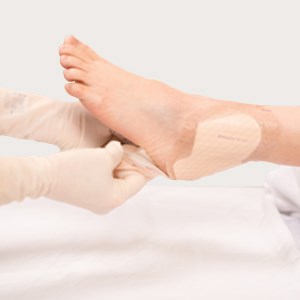 Gently apply the adherent part of the dressing marked ‘B’ (see illustration at left) under the plantar surface of the foot. Do not stretch.
Gently apply the adherent part of the dressing marked ‘B’ (see illustration at left) under the plantar surface of the foot. Do not stretch.
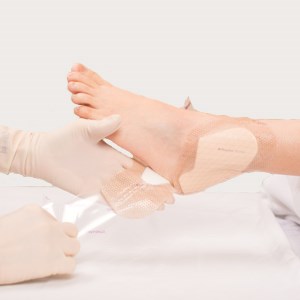 Remove the backing from one of the area ‘B’ flaps (flaps with tabs). Apply and smooth border. Repeat with the other side. Do not stretch.
Remove the backing from one of the area ‘B’ flaps (flaps with tabs). Apply and smooth border. Repeat with the other side. Do not stretch.
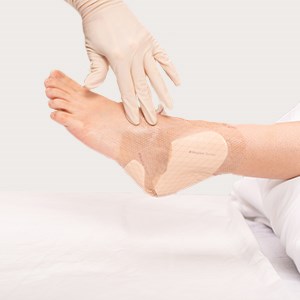 Press and smooth the dressing to ensure the entire dressing is in contact with the skin.
Press and smooth the dressing to ensure the entire dressing is in contact with the skin.
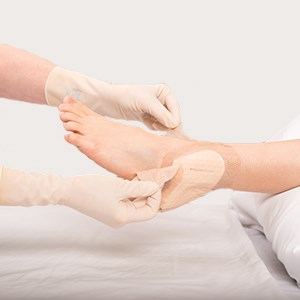 Gently pull handling tabs to release dressing from skin.
Gently pull handling tabs to release dressing from skin.
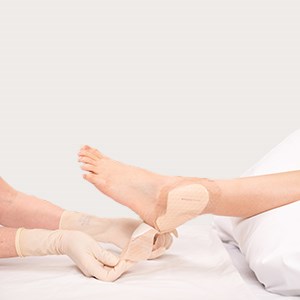 Continue to release the dressing from the skin using the handling tabs until the skin is exposed for skin check.
Continue to release the dressing from the skin using the handling tabs until the skin is exposed for skin check.
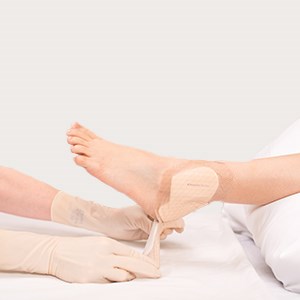 While maintaining the dressing position at the proximal edge of ‘A’ (see picture), perform assessment of the skin.
While maintaining the dressing position at the proximal edge of ‘A’ (see picture), perform assessment of the skin.
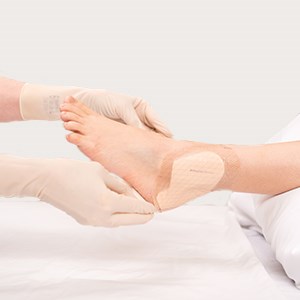 Re-apply the foam and border of the dressing. Make sure the flaps with the tabs are placed over the ankle flaps.
Re-apply the foam and border of the dressing. Make sure the flaps with the tabs are placed over the ankle flaps.
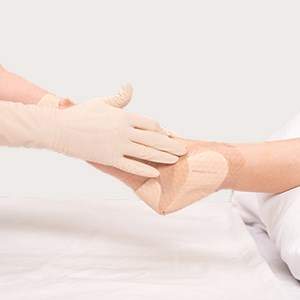 Confirm dressing is replaced to its original position, making sure the border is intact and flat.
Confirm dressing is replaced to its original position, making sure the border is intact and flat.
 Press and smooth the dressing to ensure the entire dressing is in contact with the skin. Re-apply non-skid sock if using, especially for ambulatory patients.
Press and smooth the dressing to ensure the entire dressing is in contact with the skin. Re-apply non-skid sock if using, especially for ambulatory patients.





